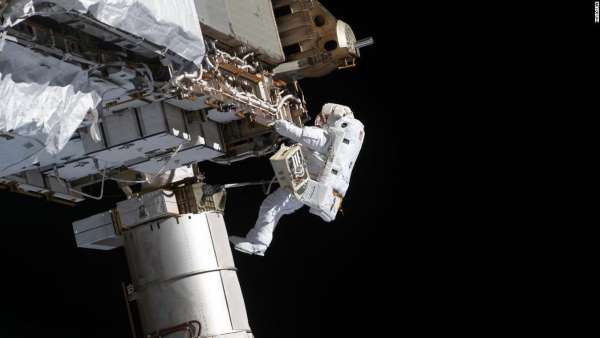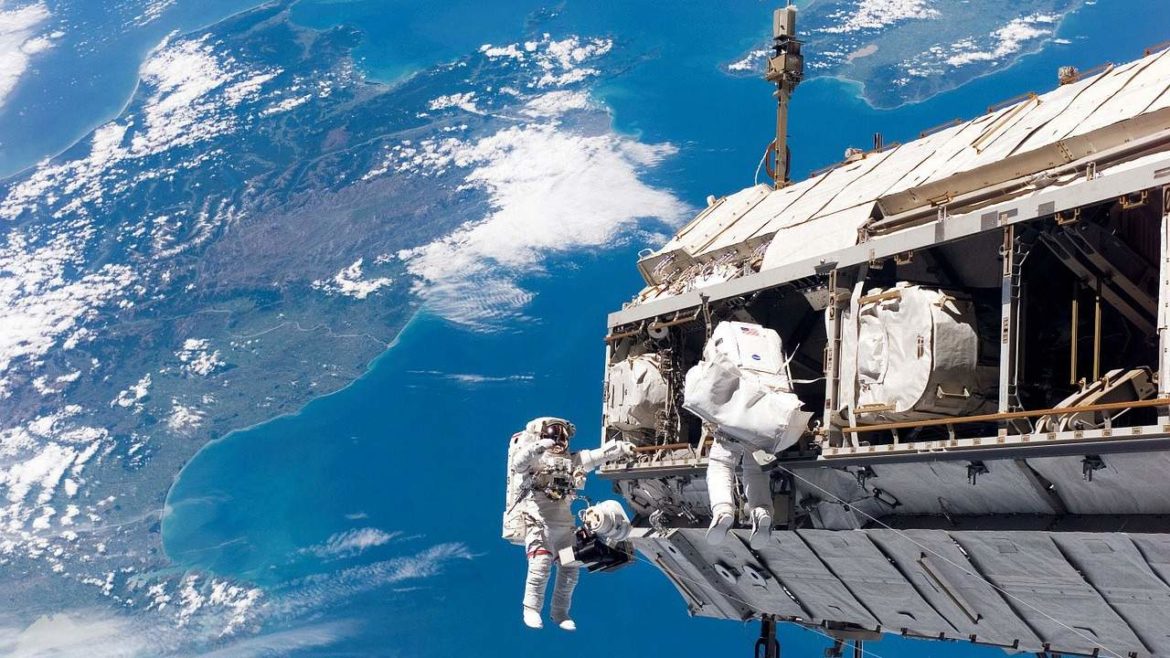Spacewalk underway, beginning process of increasing Space station’s power capacity
Written content from Pete Harding
Two astronauts aboard the International Space Station (ISS) are set to conduct a spacewalk to begin the process of increasing the station’s electrical power generation output.
The spacewalk, US EVA-71, will be conducted by NASA astronauts Kate Rubins and Victor Glover, who officially began the sojourn at 06:12 EST (11:12 UTC).
Solar array background:

The ISS is equipped with eight Solar Array Wings (SAWs), each of which were designed to produce around 30 kilowatts (kW) of power, for a total of about 250kW across all eight arrays.
The oldest array, attached to the P6 truss, was launched in 2000 on the STS-97 mission of the Shuttle Endeavour, with the additional arrays launching in 2006, 2007, and 2009 onboard the STS-115 and STS-117 missions of Atlantis and the STS-119 mission of Discovery, respectively..
Due to degradation — which was expected — the power-generating arrays now only produce around 160kW of power. At the same time, the Station’s users, including the recently added Nanoracks Bishop airlock and European Bartolomeo external platform, are requiring more power than was originally envisioned at the time of the outpost’s design.
Whilst the Station’s solar arrays were originally designed to be completely removed and replaced via the Space Shuttle, the retirement of that vehicle forced the ISS program to come up with an innovative solution to increase the amount of available power.
Specifically, six new ISS Roll Out Solar Arrays (IROSA) will be added. The IROSAs are a new type of array technology, which differs from the Station’s original arrays which were folded up and deployed in an accordion-like manner.

Developed by Deployable Space Systems of California, the IROSAs roll out in a mat-like manner from inside a cylindrical canister.
Its solar cells are mounted on a very thin, flexible blanket rather than traditional rigid panels, and it features a composite boom which adds rigidity and allows for deployment without the use of motors or complex mechanisms.
This allows the large arrays to be stowed very compactly — which is important given the current launch options available to the Station program.
The solar cells themselves are around 30% efficient, compared to the 14% efficiency of the original arrays. This allows the IROSAs to generate roughly the same amount of power as the original arrays, despite being only half their size.
The IROSAs will be installed over six of the Station’s existing solar arrays. Although the IROSAs will partly shadow the existing arrays, the original arrays will still continue to generate power alongside the IROSAs.

Installing the IROSAs over the top of the existing arrays allows them to utilise the existing sun-tracking motors — the Beta Gimbal Assembly — of the current arrays and allows each IROSA to be connected into the electrical system used by the current arrays to augment their power.
Each IROSA will produce 20kW of additional power, for a total of 120kW across all six arrays. The unshadowed portions of the original arrays will continue to produce 95kW, making for a combined total of 215kW of power which will be available to the Station, close to its original level.
A sub-scale version of the IROSA was successfully tested on Station in 2017, and the technology is already planned for use on the Power and Propulsion Element (PPE) of the Lunar Gateway, as well as on Dynetics’ Human Lander System (HLS), for the Artemis Moon program.
The six IROSAs will be launched two at a time on a pallet inside a SpaceX Cargo Dragon 2 trunk starting with the CRS-22 flight in June 2020. The new arrays will be installed via spacewalks. Read more from Nasa Space Flight
Subscribe here





